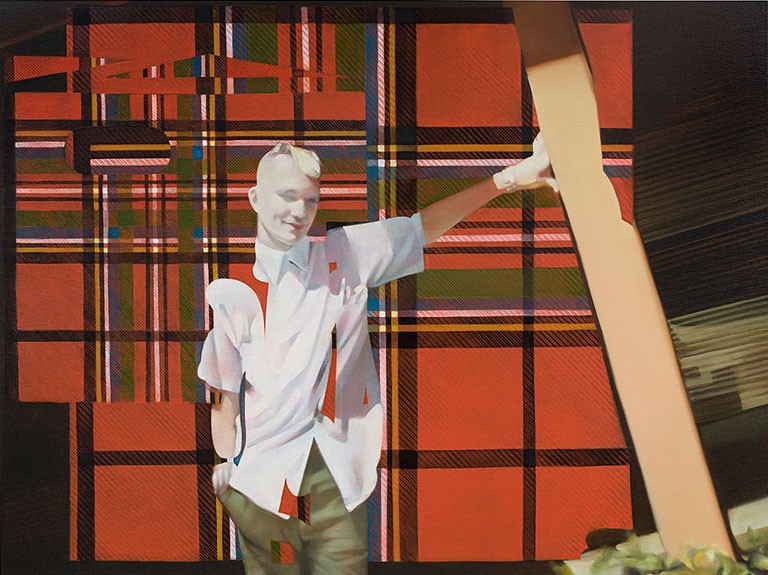
RED
The color red has held deep symbolic resonance throughout time and across cultures since red pigment made of ochre was employed in cave paintings. Red has symbolized life, health and victory (ancient Egypt); war and triumph (ancient Rome); majesty and authority (Byzantine Empire). In the West it is associated with martyrdom, sacrifice and military pageantry; in the 18th century resistance and revolution; in the 20th century, Communism. It is also a color of contradiction, associated with love but also of war; a signal of alarm and danger; blood and sin; it is a color that stirs emotion. What is it about this color that signifies bright and present danger that can both attract and repel but always demands to be noticed? In RED, fifteen artists embrace the color to varying ends and through various medium: from the pinkish reds of Gajin Fujita’s stencil drawing, through the shimmering reds of Katharine Sierverding’s photograph and to the dark ochre hue of Alison Saar’s print.
John McCracken’s deep red sculpture Centaurus (1988) greets the visitor to the exhibition: an obelisk that invites the viewer to enter the space of red. Frederick Hammersley employed the color as the foundation of his hunch painting On red, 1958 and it dominates his geometric abstraction Adjective #9 (1966) in which the white top right quadrant qualifies the intensity of the bright red three quarters of the canvas plane. Heather Gwen Martin softens the color: ethereal blended reds appear as wispy forms that float across the picture plane, while Dion Johnson creates a lively tempo with the color in Red Rhythm (2023). Matt Wedel uses a deep red glaze on a faceted base to offset the colorful blooms of his ceramic sculpture and Juan Uslé’s patterned abstraction Ocho Incompleto, (1994) bares aloft a single deep red swirl that seems to energetically wiggle across the foreground of his painting. Two works on paper represent Gajin Fujita and that demonstrating a contrasting use of color: the bright red of Study for Game of Drones (Texaco Star with Cross), 2023 signals the evils of fossil fuels and high Capitalism; while soft, pale reds outline a geisha who drinks from a wine bottle held aloft in Study for Red, Red Wine (2019). The depiction of a richly textured red tartan – punk appropriation and Scottish signifier – forms the background of Rebecca Campbell’s Trevin (2018). Signaling identity, the red of the fabric dominates the visual field and contrasts with the title figure that Campbell paints in muted colors. Tony Bevan employs scumbled acrylic reds in his figurative paintings: red accentuates the turmoil of a deconstructed spinning head, and in Fork (1989) it is the field of color upon which a disembodied arm surges into the foreground. Confrontation, urgency and danger is strikingly conveyed in Katherina Sierverding’s monumental polarized double portrait Stauffenberg-Block III/XI (1969-96) that is named for the German army officer who attempted to assassinate Adolf Hitler. Red also signals crisis in Tony Berlant’s August 7, 1946-Icon, a day of international tension, while the male head of Alison Saar’s Black Coal Blues (2017) is printed on an appropriated rag that bares the words “Stay Alert Stay Alive” and is the color of dried blood. Accentuating risk also, in Addictions (1991), Tom Wudl paints a snake over a deep slash of red pigment. By contrast it is employed to tonguein check-effect by R.B. Kitaj in his print Romance of the Civil Service (Charge Sheet), 1967, and is enigmatically employed by Don Suggs in his abstraction Big Red Folly (2016). Viewed in its entirety, RED presents a gamut of intense human emotion and experience through a color that never fails to cause a stir.